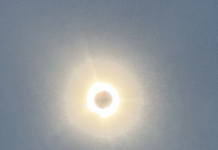I am moderately attractive: young-ish, at 35; fit-ish, at 5’7” and 150 pounds. My hair is good, my skin OK. I have a big varicose vein on one leg that resembles a map of the Mississippi River, a noticeable scar that grins out from my neck, and several moles on my arms and chest. My eyes are too little, my forehead too big. I have freckly skin, cellulite on my butt and thighs, and—like most red-headed, white women—I’m not aging gracefully.
Despite my gender (female) and profession (actor), these facts usually give me little to no worry. I take no excessive notice of my imperfections and make no world-moving efforts to conceal them in everyday life or next to my competitors at auditions.
And then I went to Los Angeles for the first time. Suddenly I saw myself through a new critical and unforgiving lens. Walking into LAX, I encountered a sea of Cameron Diaz clones and model-worthy physiques, a thigh-gapped Southern California ideal all around me. For the first time in my life, comparing myself to other women made me feel grotesque, unacceptable. A few nights later, I refused to leave the bathroom of my boyfriend’s apartment because of a dress I thought made me look like Mrs. Doubtfire. I had never before cried into a locked door because I so hated my reflection—an adolescent breakdown from a woman closer to menopause than puberty.
My first night back in Minneapolis, before my bags were even unpacked, I took a shower and didn’t bother to shave my knees. Because, you know, who cares?
So why this changing lens?
Body image is characterized as the cause of eating disorders; it’s distorted by Photoshopped models in magazines; it’s what’s wrong if you hate your body. And it can be harrowing if you’re seesawing between two cities with very different ideas of an ideal (female) body.
I contacted Traci Mann, a University of Minnesota psychology professor and body-image specialist who lived in Los Angeles for 11 years. She described how her self-perception changed when she entered the city’s trendier districts: “There were just some restaurants and boutiques that I knew weren’t for me,” she said. “Not that I wasn’t allowed in—I just wasn’t beautiful enough to be there, plain and simple.”
Hearing this felt almost debilitating. If a body-image expert found herself intimidated on an L.A. street, how was I going to navigate a Hollywood audition?
Not quite ready to walk into the lion’s den, I called up L.A. talent agent Melissa Mangum. “Gorgeous is just one type,” she told me. “And it’s over-saturated.”
My best shot was in advertising, she said. “My clients want talent that reflects their brand and their consumers. Too polished, too beautiful can put them off sometimes. Characters do well out here. You just need to know your type.”
So what did Mangum think of the “Midwest” type?
“Clients request it a lot,” she said. “Midwest is not L.A. Not as polished, not high-fashion—Midwest is real.”
The irony of needing to embrace reality as I strive for a job in make-believe leads me to laugh out loud. I picture myself in an L.A. audition room at some point in the future. I stand before a panel of disappointed creatives who asked for a tawny vixen and got me instead. I see their tapping pencils and their creased brows and—boom—I bring my leg down on the conference table with a confident thump and wow ’em with the realness of my Mighty Mississippi vein.







